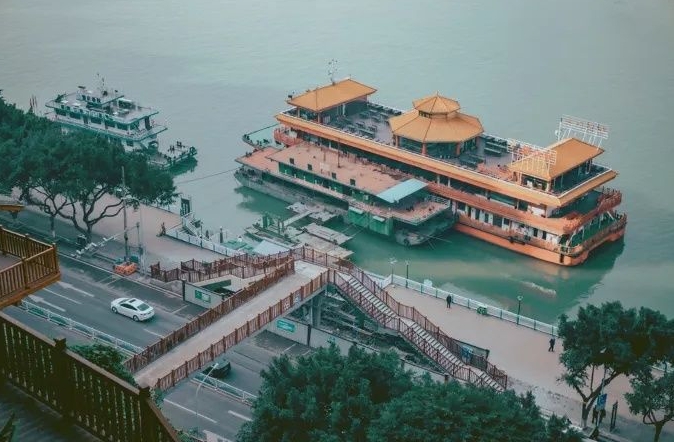The Evolution of Dock Culture in Chongqing: from Historic Transit Hubs to Modern Open Platforms
Chongqing's urban area spans nearly 100 kilometers along the banks of the Yangtze River and Jialing River, making it a natural port city. Where there are ports, there are docks. With convenient water transportation, Chongqing's dock culture gradually emerged. In the early days, five of Chongqing’s Bayu Twelve Scenic Spots were closely related to docks. In the fourth season of Aerial China, the Chongqing episode mentions that the city of Chongqing, which thrives because of its rivers, began its development at Chaotianmen Dock. Every vessel docking there brought about a new convergence, giving the city its inherently inclusive character.

Yin Mingshan, Vice President of the China Federation of Industry and Commerce and Chairman of Lifan Group, offered his interpretation of Chongqing’s dock culture during the Chongqing Business Conference. He believes that Chongqing’s dock culture embodies elements of inclusiveness and openness, forming the cultural foundation for Chongqing’s development as an inland hub of openness.
Since ancient times, Chongqing’s location at the confluence of two rivers has made it a key point for waterway transportation. From the historic Chaotianmen Dock to the newly constructed Cuntan Container Terminal, Chongqing’s docks have always been crucial transit hubs for water traffic along the Yangtze River. With the deep and calm waters of the Yangtze and Jialing Rivers, Chongqing is a natural harbor. Ports lead to docks, where workers, in groups, carry goods on their shoulders, chanting loud and rhythmic work songs. Over time, the unique dock culture of this city gained widespread recognition.
One of the Bayu Twelve Scenic Spots from the Qing Dynasty, Zishui Xiaodeng, referred to the sight of the numerous lights illuminating Chongqing. A significant portion of these lights came from the boats along the docks. At that time, the most bustling and well-lit areas in Chongqing at night were the docks. Families on the boats gathered to eat hot pot, chat, or gamble. Their lights illuminated the Yangtze River, creating what could be considered Chongqing’s earliest nightscape.
The origins of dock culture may lie in the need for solidarity and mutual support for survival in challenging conditions. The camaraderie and loyalty of the dock community, characterized by its boisterous banter and shared struggles, formed the early cultural bloodline. Over time, as Chongqing went through the industrial era, the treaty port period, and its role as the wartime capital, dock culture underwent further redefinition. Today’s docks are no longer merely transportation nodes but have become increasingly open platforms for broader interactions.

